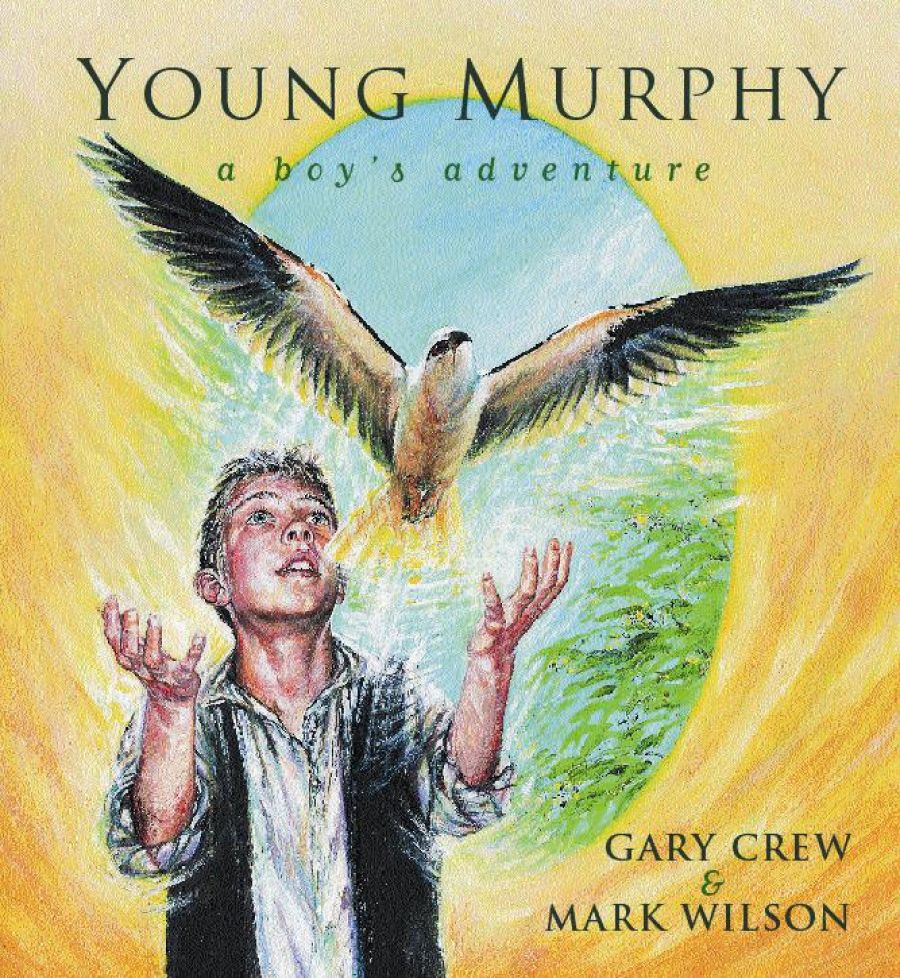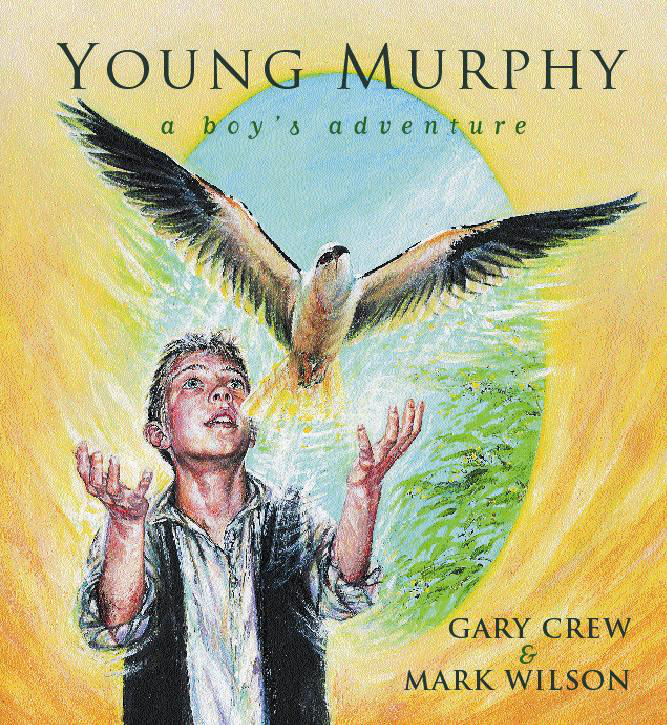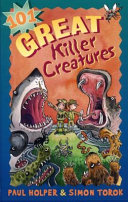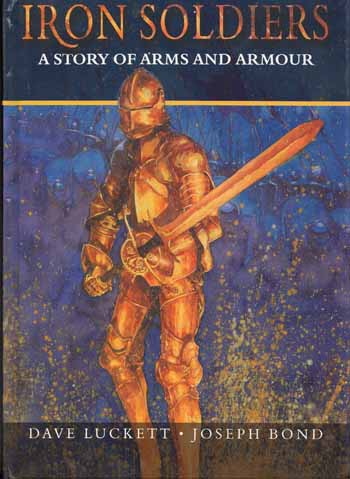
- Free Article: No
- Contents Category: Children's and Young Adult Fiction
- Review Article: Yes
- Article Title: Tide of history
- Online Only: No
- Custom Highlight Text:
There is an almost overwhelming tide of historical texts for young people being published at the moment. Fictional accounts of actual events are enormously popular, and frequently the diary form is used, as this is felt to be more accessible to young people, and also gives the writer licence to use the historical present tense with impunity.
- Book 1 Title: Young Murphy
- Book 1 Subtitle: A boy’s adventure
- Book 1 Biblio: Lothian, $27.95 hb, 32 pp
- Book 1 Cover Small (400 x 600):

- Book 1 Cover (800 x 1200):

- Book 2 Title: 101 Great Killer Creatures
- Book 2 Biblio: ABC Books, $14.95 pb, 89 pp
- Book 2 Cover Small (400 x 600):

- Book 2 Cover (800 x 1200):

- Book 3 Title: Iron Soldiers
- Book 3 Subtitle: A story of arms and armour
- Book 3 Biblio: Scholastic, $29.95 hb, 32 pp
- Book 3 Cover Small (400 x 600):

- Book 3 Cover (800 x 1200):

The historical record lying behind the facts as presented here is incorporated through a short introduction and a summary of the expedition; an afterword that gives fuller biographies of each of the characters; and, finally, a brief description of what is known of the rest of John Murphy’s life. Crew makes no secret of his feelings about the German explorer, describing Leichhardt in the brief biography appended as ‘Self-proclaimed doctor. Deserter from the German Army. A drifter with no occupation or history of employment who lived at the expense of others.’ Crew’s mastery is shown in the actual diary entries, which make Murphy come alive.
The main body of the book follows a formula of a double-page spread, with text on the left-hand page and a full-colour picture on the right. Murphy’s diary entry is printed in bold at the bottom of the page, with a small map showing the progress of the expedition at the top. A dated, italicised extract from Leichhardt’s own diary is given as a header to each of Murphy’s entries, and speaks loudly of his pettiness and self-importance in the face of the suffering of others. The illustrations are presented as coloured cameos, surrounded by rough pencil sketches, which evoke the hasty thumbnails produced by expedition scientists and artists. The pictures are at times forced, and the fact that Murphy was a hunchback comes as a surprise when Crew reveals this in the appended biography; in only one of the illustrations is this discernible. The animals, in particular the birds and dogs, are well drawn; however, Wilson’s human figures are disappointingly wooden. A wonderful exception is the cameo of an all-too-real teenage head-in-hands slump to illustrate Murphy’s despondence over the death of his pony; but it is marred by the stick-like rendition of the boy memorialising his friend and mentor on the following page. Perhaps we were meant to regard the illustrations as the boy narrator’s own. The cover is striking but gives a rather more optimistic view of the outcome than is revealed by the text. An interesting slice of exploratory history for older readers.
Dave Luckett is a fantasy writer of considerable ability who also has an interest in war gaming and military history, according to the blurb for Iron Soldiers: A Story of Arms and Armour. He attempts to record the story of warfare across eight centuries through the development of armour. Beginning ‘a bit more than a thousand years ago’, with the Viking invasion of present-day England, Luckett traces the history of the progress of weapons technology. The narrative is a chronological story of successive generations of blacksmiths and metal craftsmen, who adapt and invent to keep pace with the requirements of lords and landowners who were in turn performing compulsory military service for the king. The book ends in the early 1500s with the first impact of musketry in battle, marking the beginning of the decline of full-metal armour.
Luckett has paid his sophisticated reader the compliment of including terms such as heaume, hauberk and rembrace within the text with minimal explanation. The book can be read as a single narrative; his poignant refrain at the end of each chapter (‘it was all very expensive’) tells us nothing much has changed in the military world. He roams freely between the imagined conversations and musings of craftsmen and technical description, and has succeeded in incorporating the social and historical consequences of the technologies that seem only to have been developed for armaments. Extra facts necessary for comprehension of the text are contained in sidebars, but the information is presented strictly in terms of its relation to the central theme of the book and never overwhelms the rest of the text. There is a brief glossary, index and metric conversion table, following an afterword that fills in some gaps relating to steel and weapons production.
Joseph Bond’s illustrations fill in the gaps and link the makers with the wearers in a combination of technical drawings with battle scenes. There are several full-page illustrations of full armour with captions that illustrate the development of armour at key stages. The use of watercolour has some illustrations bleeding over the pages. In a prevailing children’s non-fiction market of ‘Horrible History’ knockoffs, where pissing and farting are made much of, the considerable bloodshed referred to in this book is treated with reserve and respect. This is a vast subject to be treated within a picture book, but Luckett and Bond have brought it off.
What is Africa’s most deadly animal? Should you monkey around with chimps? Is Australia really a land full of killer creatures? What happened to the man who tried to hide mamba snakes, a twig snake and a forest cobra in a flimsy box under his coat? 101 Great Killer Creatures has lots of Did You Knows, tempered liberally with actual ‘Advice on what to do if ...’. The two authors have attempted to debunk while astounding with facts (‘This book answers all these questions and more’). Children, especially eight- to ten-year-olds, love this kind of thing, especially with illustrations such as Axelsen’s, which add to the fun of it all. As far as retrieving actual information from it, though, they may as well trawl the Internet for themselves: despite the writers’ scientific credentials, it reads as if most of this book came from there anyway.


Comments powered by CComment